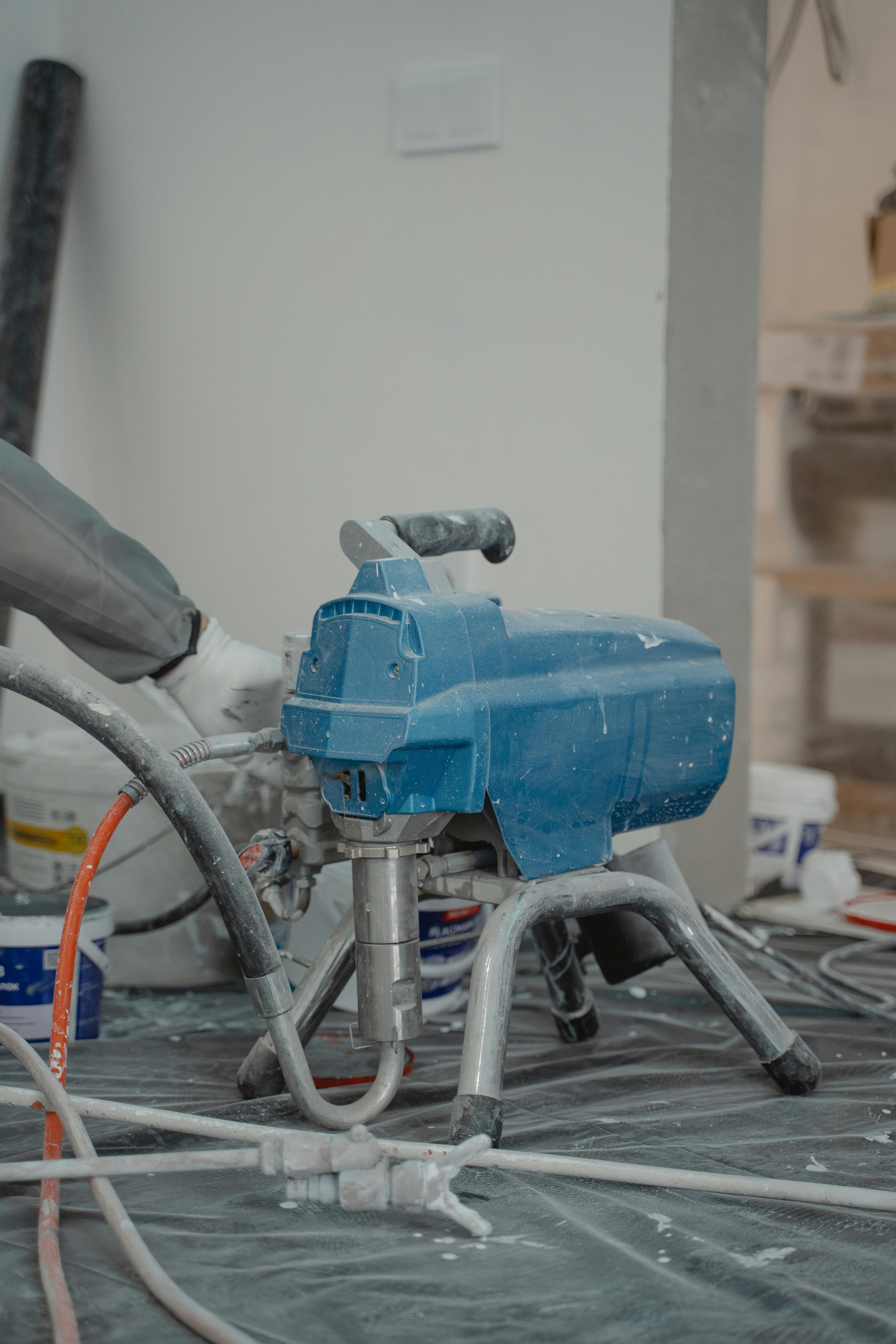Practical Guide to Your Home Trainingsplan: Achieve Your Fitness Goals in 2025
The modern world has shifted our focus toward home workouts, making it essential to develop an effective Trainingsplan zuhause. Whether you’re striving to build strength, improve endurance, or maintain a healthy lifestyle, a tailored fitness program designed for the home is your ticket to success. This guide delves into crafting a personalized fitness regimen that aligns with your goals for 2025, taking into consideration various training styles, exercises without equipment, and innovative training methods.
Among the myriad benefits of establishing a home workout routine is the flexibility it offers to individuals of all fitness levels. Not only does home training make it easier to fit exercise into a busy schedule, but it also enables the use of limited space efficiently. This article will explore diverse training methods including Krafttraining zuhause, Ausdauertraining zuhause, and mixed workouts like HIIT zuhause. Moreover, we provide strategies to maximize your training effectiveness and track progress effectively.

As the sections progress, you will discover essential components such as warm-up routines, stretching techniques, and nutrition tips, crucial for optimizing your fitness journey. By the end of this guide, you’ll be equipped with the knowledge necessary to establish and maintain a successful home workout routine tailored to your personal objectives.
Creating an Effective Home Workout Plan
Building a home workout plan that suits your lifestyle and fitness goals is foundational for success. Start with identifying your fitness objectives; the clearer your goals, the more tailored your Fitnessprogramm für zuhause can be. Whether it’s muscle gain, fat loss, or enhanced flexibility, each objective will require distinct approaches.
Identifying Your Fitness Goals
Before diving into any workout, it’s important to outline your specific fitness goals. Do you aim for general fitness, weight loss, muscle building, or increased endurance? Clearly defined goals will not only provide motivation but will also dictate the choice of exercises and frequency of workouts. Setting realistic and measurable outcomes allows for the tracking of progress over time. Aim for a balance among strength training, cardio workouts, and flexibility sessions, accommodating all aspects of fitness.
Types of Exercises for Your Home Routine
Your home workouts can incorporate a variety of exercises that serve different fitness needs. For muscle building, focus on bodyweight exercises such as push-ups, squats, and lunges that require no equipment. To improve cardiovascular health, consider options like jumping jacks or burpees as part of a Cardio Übungen zuhause routine. Be sure to include flexibility training like yoga or stretching to enhance mobility and recovery. Each workout should vary enough to fend off boredom, maintain engagement, and encourage gradual progress.
Structuring Your Workout Schedule
Consistency is key to achieving fitness goals, and structuring your workout days is a great way to ensure adherence. A typical weekly plan could involve alternating strength training days with cardio sessions. This might look like three days of strength training focusing on Krafttraining zuhause, followed by two days dedicated to Ausdauertraining zuhause. Including rest days will also allow your muscles to recover adequately. Adapting your training plan seasonally or monthly can help keep the regimen fresh and aligned with evolving goals.

Incorporating Warm-Up and Cool-Down Exercises
Any effective workout regime must begin with an appropriate warm-up and conclude with a cool-down. Warm-up exercises increase blood flow to muscles, preparing them for exertion. Simple activities such as arm circles, leg swings, or brisk walking in place can suffice. On the flip side, cool-down exercises such as stretching help in muscle recovery and maintaining flexibility. They also provide a moment to reflect on your workout, reinforcing a positive training mindset.
Tracking Progress and Adjusting Your Plans
To ensure your workout plan remains effective, tracking progress is essential. Document your workouts, monitor body measurements, and assess how your body feels during and after exercises. Many fitness apps offer comprehensive tracking features that allow you to celebrate milestones tailored to your Trainingsfortschritt verfolgen. Should you notice your progress stalling, it may be time to modify your routine, increasing intensity or switching exercises altogether.
Effective Training Techniques for Home Workouts
Now that the groundwork for your home workout plan is laid, we can dive deeper into the training techniques that can further enhance your results. From high-intensity interval training (HIIT) to strategic use of bodyweight, these methods will help you optimize your home fitness journey.
High-Intensity Interval Training (HIIT) Without Equipment
HIIT has gained popularity for its efficiency, and it can easily be adapted to home workouts. This technique alternates between periods of intense effort and short recovery, perfect for those pressed for time. For an effective HIIT session at home, select three to four exercises such as burpees, high knees, and mountain climbers and perform them in quick succession followed by short rest intervals. Not only does this method boost metabolic rate, but it can also lead to significant improvements in cardiovascular fitness.
Bodyweight Training for Muscle Development
Bodyweight exercises offer a fantastic way to build strength without the need for gym equipment. Options like pull-ups using a sturdy door frame, tricep dips on a chair, or planks effectively engage multiple muscle groups. Incorporating variations of these exercises can progressively challenge your body and stimulate muscle growth. Ensure that your form remains intact throughout these movements to prevent injuries.
Mobility and Flexibility Workouts
Integrating flexibility training is integral to any fitness program and is often overlooked. Regular mobility workouts, such as those found in Yoga für zuhause, not only improve flexibility but also promote recovery and injury prevention. Engaging in targeted mobility drills will enhance performance by ensuring joints and muscles are functioning optimally, thereby reducing the risk of injury as you push your limits.
Utilizing Training Apps and Online Classes
To take your home workouts to another level, consider incorporating technology into your fitness journey. Numerous Trainingsapp zuhause and online programs provide guided workout sessions and structured plans designed by professionals. This can offer a new level of accountability and motivate you to stay committed while trying out workouts you might not have considered before.
Nutrition Strategies to Complement Your Home Training
Nutrition plays a paramount role alongside any fitness endeavor. To see the results of your dedication, fueling your body with wholesome foods is essential. A well-balanced diet that aligns with your fitness goals will not only enhance your performance but also aid recovery.
Understanding Macronutrients for Fitness
Familiarize yourself with macronutrients — proteins, carbohydrates, and fats — as they each serve a critical role in your diet. Individuals focused on muscle gain will benefit from increased protein intake, while those looking to lose weight may find carb cycling beneficial. Understanding how these nutrients affect your body will enable you to make informed choices about what to eat before and after workouts.
Establishing Healthy Eating Habits
Incorporating healthy eating habits is fundamental to achieving fitness goals. Meal prepping, for example, not only saves time but also helps in making conscious food choices. Aim for whole foods rich in nutrients and minimize processed foods. Hydration is equally essential; keeping a bottle of water handy during workouts ensures you remain hydrated, which optimizes physical performance and recovery.
When to Eat to Maximize Performance
Timing your meals can significantly impact your energy levels during workouts. Eating a balanced meal containing complex carbohydrates and protein about 1-2 hours prior to exercise can provide the energy needed to perform effectively. Post-workout, consume protein-rich foods to aid muscle recovery and replenish energy stores. If you’re unsure about meal timing or nutrient ratios, consulting a nutrition expert can be invaluable.
Yoga and Flexibility Training at Home
As we shift toward gentler yet effective fitness modalities, Yoga and flexibility training become crucial components of a holistic fitness program. This practice enhances not only physical capabilities but also promotes mental well-being and relaxation.
Incorporating Yoga into Your Fitness Routine
Yoga for zuhause is not merely about improving flexibility; it also fosters mindfulness, breathing techniques, and body awareness. Practicing yoga can alleviate stress, improve posture, and enhance overall strength. Aim to include at least a couple of yoga sessions a week for maximum benefit. Various online resources and apps provide guided sessions suited for every skill level.
Stretching as Part of Your Daily Routine
Stretching is an integral aspect of any workout, contributing to flexibility and muscle recovery. Spend 5-10 minutes stretching before and after workouts. Focus on dynamic stretching to warm up before your sessions, and static stretching after workouts to relax muscles. Attention to these practices significantly reduces injury risk and enhances performance over time.
Creating a Home Yoga Space
Having a designated yoga space at home can significantly enhance your practice. Set up a quiet area with minimal distractions to foster a more immersive experience. Consider investing in props such as mats, blocks, and straps, which can provide additional support and variety in your movements. This commitment to your space reflects a commitment to your practice.
Keeping Motivated on Your Home Fitness Journey
Maintaining motivation is critical, especially when training outside of a conventional gym setting. It’s easy to lose sight of your fitness goals when workouts become routine or progress plateaus. That’s why it’s essential to adopt strategies that ignite passion and perseverance in your fitness journey.
Setting Realistic Goals and Milestones
Breaking down your ultimate fitness goals into smaller, achievable milestones can keep your motivation high. Celebrate these milestones, whether it’s completing a challenging workout or successfully tracking your progress over a month. Regular reassessment of your training goals ensures they remain attainable and allows for timely adjustments.
Finding Workout Partners for Accountability
Partnering up with friends or family for workouts at home can boost motivation significantly. Whether it’s sharing your goals or completing workouts together via video calls, a workout buddy can provide accountability and support. Engaging with a community or using online forums can further foster connections with like-minded individuals.
Staying Inspired with Online Resources
Take advantage of the wealth of online resources available for fitness motivation. Whether it’s finding motivational quotes on social media or exploring fitness blogs, surrounding yourself with positive influences will inspire your journey. Additionally, following trainers and fitness enthusiasts who align with your aspirations can provide fresh ideas and invigorate your routine.
Q&A: Common Questions About Home Workouts
How do I start a home workout program?
Begin by identifying your fitness goals and creating a structured workout schedule. Incorporate a mix of strength training, cardio, and flexibility exercises. Utilize online classes or workout apps to guide you initially.
Do I need equipment for home workouts?
No, it’s entirely possible to build strength and improve fitness using just your body weight, especially with exercises such as push-ups, squats, and lunges.
How often should I work out at home?
Aim for at least 3-5 workout sessions per week, varying the focus between strength training, cardio, and flexibility to ensure a balanced approach.
What should I eat before and after my workouts?
Consume a snack high in carbs and protein about 1-2 hours before a workout. After exercising, prioritize protein-rich foods to assist muscle recovery.
Can I still achieve my fitness goals without a gym membership?
Absolutely! Home workouts can be just as effective, especially with a well-structured plan that combines strength, cardio, and flexibility training.
This comprehensive guide provides the foundational tools and resources needed to achieve your fitness goals in 2025. Embrace the journey, stay committed, and enjoy the benefits of fitness from the comfort of your home.
